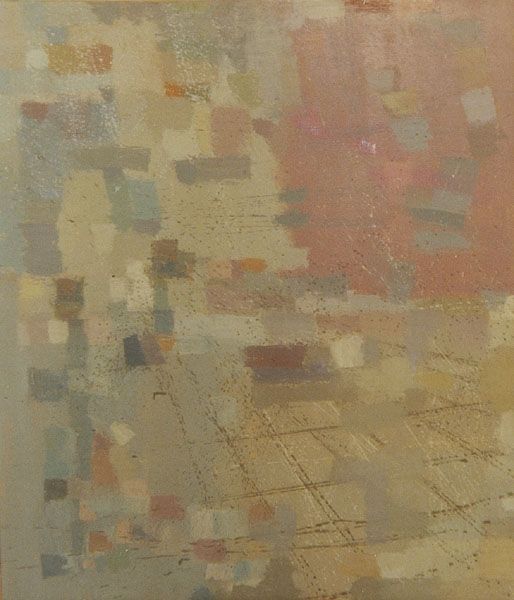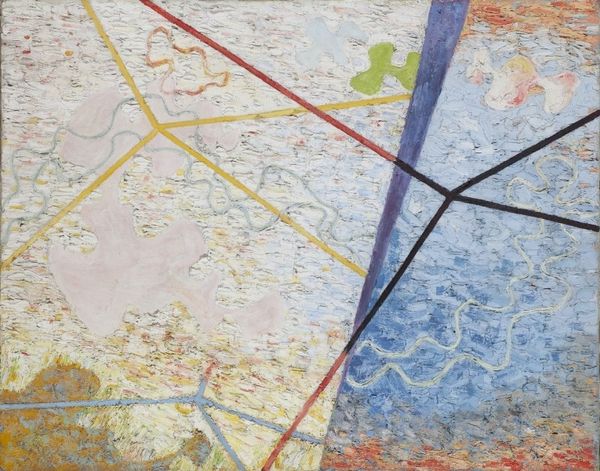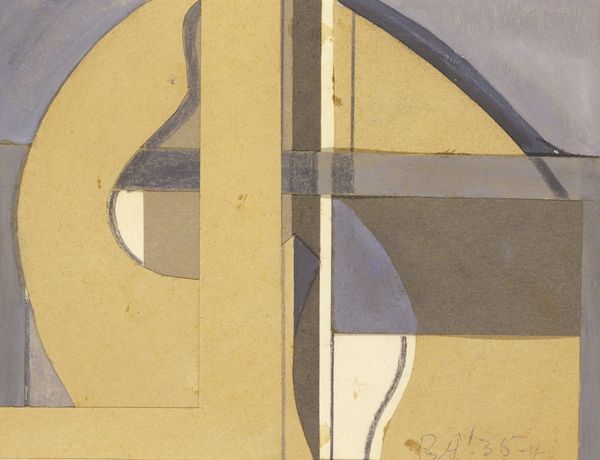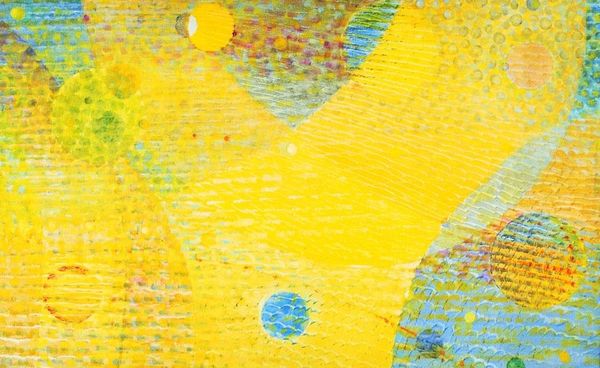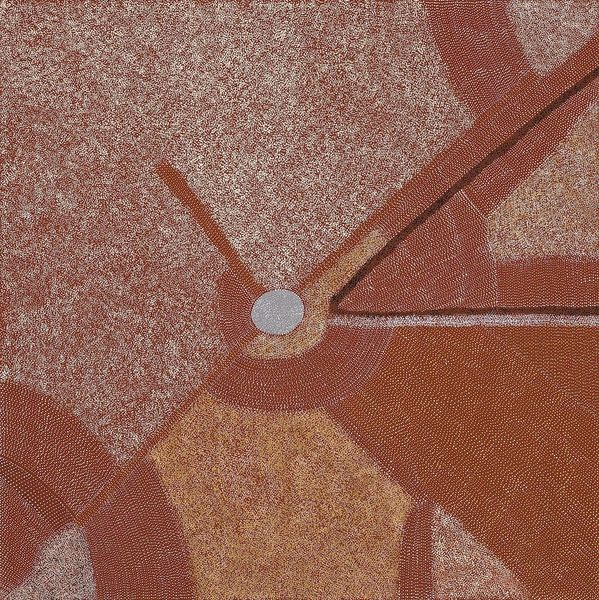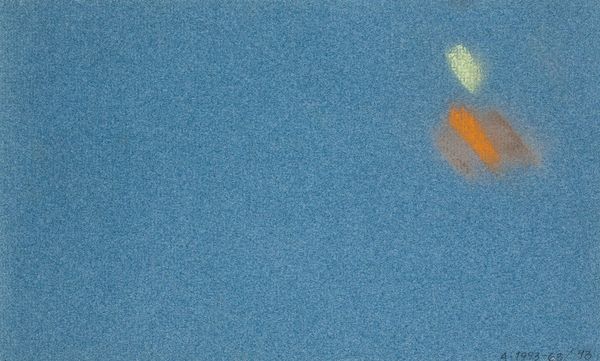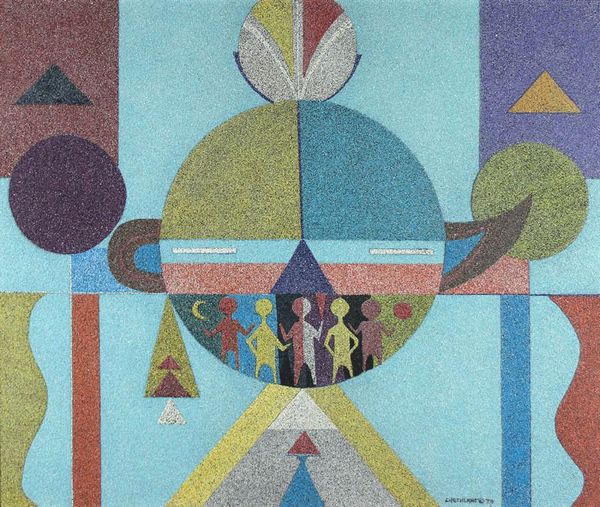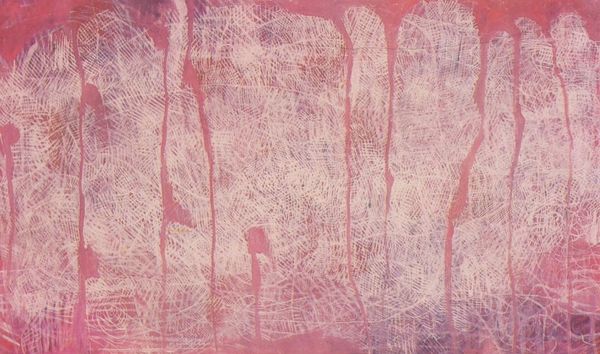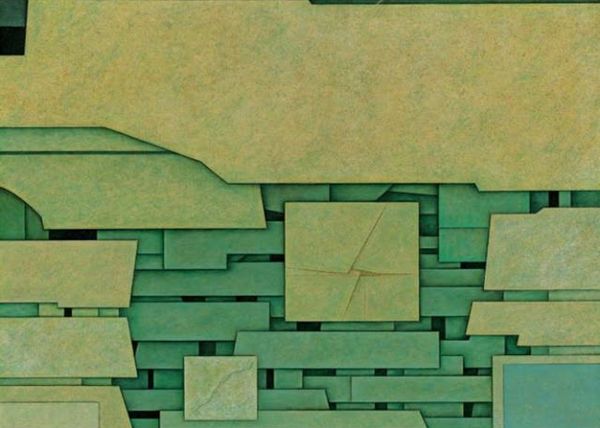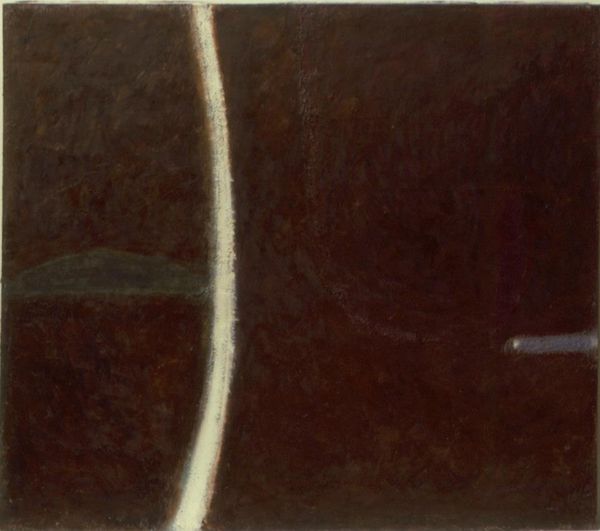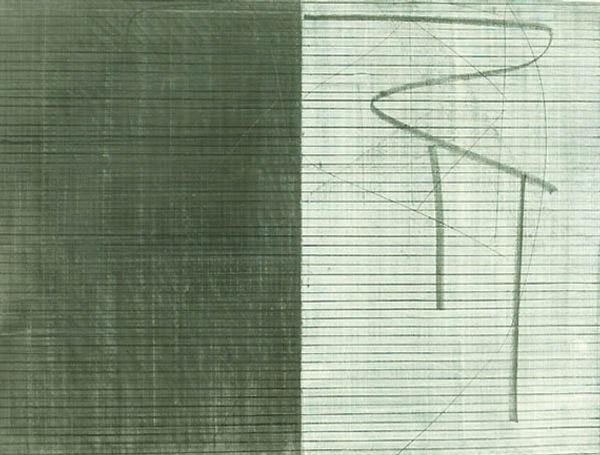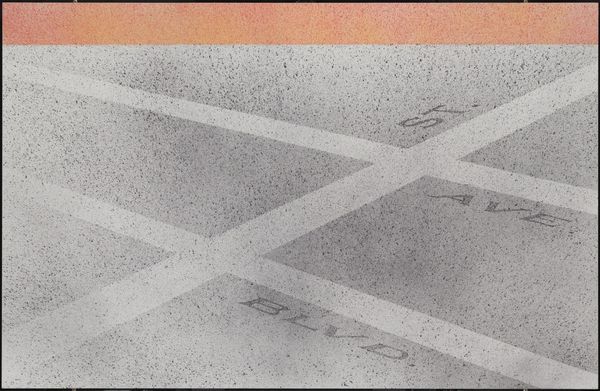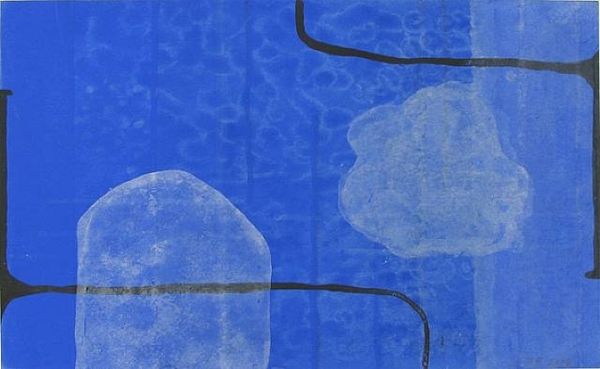
painting
#
organic
#
abstract painting
#
painting
#
painted
#
possibly oil pastel
#
acrylic on canvas
#
abstraction
#
line
Copyright: Abie Loy Kemarre,Fair Use
Editor: Here we have Abie Loy Kemarre's "Bush Hen Dreaming," created in 1996, with acrylic paint. I find the abstract geometric patterns almost map-like; it evokes a sense of looking down from above onto a landscape, perhaps? What strikes you about it? Curator: The dreaming, or Jukurrpa, holds profound cultural memory. It's not simply a story, but a complex system connecting people, the land, and ancestral beings. Look closely at the dots; notice how they create lines and fields of color. The circular motifs can often signify waterholes or campsites. Editor: So, it’s less about representing a literal landscape and more about conveying a deeper understanding of place through symbols? Curator: Precisely. In many Indigenous cultures, the act of creation, the painting itself, is a ritualistic embodiment of that Dreaming. These visual elements function like mnemonics, prompting the recall of ancestral narratives, land management practices, and kinship systems. Ask yourself, what kind of knowledge is encoded within this 'map?' What might the Dreaming communicate? Editor: I’m also wondering if the muted color palette plays a part in conveying a particular mood? It's quite earthy and subtle. Curator: Colors hold cultural weight. Earth tones, for instance, directly link the work to the land, reinforcing that relationship between the ancestral stories and the environment itself. This layering of meaning creates powerful imagery; a memory palace built from pigment and canvas. Editor: It's fascinating how an abstract painting can be so full of cultural and historical significance. I’ll definitely be thinking about those layers of meaning from now on. Curator: And how powerful art can be, conveying stories through visual form and the passing on of traditional knowledge through visual media.
Comments
No comments
Be the first to comment and join the conversation on the ultimate creative platform.
